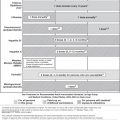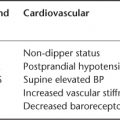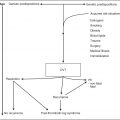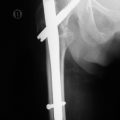Palliative Care
The World Health Organization defines palliative care as an approach that ‘improves the quality of life of patients and families who face life-threatening illness, by providing pain and symptom relief, spiritual and psychosocial support’.1 The National Institute for Health and Clinical Excellence (NICE) states that ‘patients want to be treated as individuals, with dignity and respect, and to have their voices heard in decisions about treatment and care. Should they need it, they expect to be offered optimal symptom control and psychological, social and spiritual support. They want to be assured that their families and carers will receive support during their illness’.2
Most healthcare professionals will at some time during their careers provide care for those who are terminally ill and dying. These professionals will already be providing personalized care with the aim of improving the quality of life of their patients, whether or not the option of life prolongation is available. Those involved in such care will acknowledge the need to relieve psychological distress in addition to physical symptoms and the benefits for the patient of providing support to informal carers. Thus, all healthcare professionals are providing palliative care—sometimes termed ‘generic’ palliative care—and those providing it should be able to3
- Assess the care needs of each patient and their families across the domains of physical, psychological, social, spiritual and information needs.
- Meet those needs within the limits of their knowledge, skills, competence in palliative care.
- Know when to seek advice from or refer to specialist palliative care services.
In addition to the generic palliative care provided by all those with patient contact, specialist palliative care is provided (in some areas of the world) by those who have undergone extensive education and training focusing on the care of patients with terminal illnesses. These specialists will often work exclusively with palliative care patients. Current UK guidance emphasizes the benefits of providing this care by working in multiprofessional teams.2 The UK’s National Council for Palliative Care recommends that ‘specialist teams should include palliative medicine consultants and palliative care nurse specialists together with a range of expertise provided by physiotherapists, occupational therapists, dieticians, pharmacists, social workers and those able to give spiritual and psychological support’.3
The Benefits of a Palliative Approach
About 1% of the Western population die each year and, although it can be hard to identify those patients who will die, identification of those patients likely to benefit from a palliative approach to their care can improve the experience of the patient and their family at the end of life. Such a palliative approach can help symptom control interventions take priority over those which lengthen life, and also facilitate discussions to inform advance care planning and the provision of care. This approach enables care to be tailored to the needs of the patient, the family and informal carers.
It may be possible to avoid crises and prevent hospital admissions, something that is desirable in view of the fact that studies in the UK reveal that 49–100% of patients with cancer express a wish to be cared for and to die at home,4 but in 2008 only 26% of cancer deaths and around 20% of all deaths occurred at home.5, 6 More meaningful is the result from an audit in a hospice in England that showed for patients who had a documented preference, the place of death matched the most recently documented preferred place of care in 73%.7
Traditionally, cancer patients and those with acquired immune deficiency syndrome (AIDS) have had access to specialist palliative care (SPC) services, whereas those with other terminal diagnoses have tended not to be referred. This may be due, at least in part, to the fact that treatments for cancer and AIDS prolong life at the expense of its quality and that hospices were often founded by cancer charities. Another factor favouring implementation of a palliative approach for cancer patients is the prompt to do so provided by the withdrawal of anticancer treatments, when prognosis may still be of the order of weeks to months. In contrast, many interventions for patients with other diagnoses, for example, heart failure and chronic obstructive pulmonary disease, prolong life while at the same time improving symptom control. These treatments are often withdrawn only very shortly before death, (precisely because they provide an element of symptom control) and their withdrawal is therefore not a useful prompt for initiation of a palliative approach.
However, patients with non-malignant terminal diseases have a significant symptom burden8 and would often benefit from referral to SPC services. Professionals without extensive experience of using symptom control drugs such as opioids, anti-emetics and benzodiazepines are often concerned about their use, particularly about side effects and the potential for harm to the patient. One worry often cited is concern about the sedative and respiratory depressant effect of opioids, especially in frail elderly patients who are likely to have a degree of renal impairment. There is significant evidence that appropriate titration of symptom control drugs (including opioids) does not risk premature death due to sedation and respiratory compromise.9 There is also much evidence to confirm the beneficial effects of appropriate use of these drugs in these patients, without an excessive burden from side effects.9, 10
One of the barriers to use of a palliative approach for patients with non-malignant terminal diagnoses is the difficulty in prognosticating for this group of patients. A trajectory of gradual decline in function, punctuated by episodes of acute illness, from which the patient may recover with aggressive treatment, is typical of end-stage chronic obstructive pulmonary disease and heart failure.11
For some patients, families and professionals, it can be hard to understand that using a palliative approach to symptom control does not preclude aggressive interventions (including admissions) for acute decompensation. Referral to specialist palliative care teams (SPCTs) can provide a welcome opportunity for discussions about a patient’s goals, with clarification of the aims of treatment. Such discussions, if undertaken sensitively and over a period of time, can assist with advance care planning (ACP). Following discussions, patients and families may be empowered to decline admissions in the event of future deteriorations, in preference for treatment in the community. In the absence of these discussions, patients and their relatives are often not aware that there are alternatives to inpatient treatment. In addition, primary care teams may not be aware of how to look after such sick patients in their own homes and may need professional support from the SPCT to show them how to organize care and give them the skills and confidence to offer it.
A third disease trajectory is often demonstrated by patients with advanced dementia and elderly patients with multiple comorbidities.11 These patients have very low levels of functional ability and suffer from fluctuations in their condition over time. The precipitants for any deterioration may be unclear and may be potentially reversible, for example, a urinary tract infection that can be treated with oral antibiotics. This group of patients can also benefit from ACP (if this is possible) or planning for future care carried out by professionals in collaboration with relatives and informal carers. Use of such a palliative approach for these patients can inform decisions about how far to escalate treatment and give professionals insight into which proposed treatments are really likely to gain the patient any meaningful quality or length of life. These patients are extremely frail and are often cared for in nursing homes or similar facilities.
One of the questions that professionals often fail to consider when a patient’s condition deteriorates is, ‘Is this patient dying?’ Unless this possibility is considered, many of these patients will continue to be removed from their homes and admitted to acute hospitals for their last hours and days of life.
It is therefore clear that many patients with terminal diagnoses would benefit from the use of a palliative approach by their team of healthcare professionals. These benefits include improved symptom control and greater openness about likely prognosis and the aims of medical interventions, which may inform ACP and relieve psychological distress for all involved. Additional benefits of using this approach include provision of support for relatives and informal carers, better coordination of care and tailoring care more closely to the needs of patients and their families.
To help overcome the difficulties of prognosticating for patients with diverse diagnoses, The Gold Standards Framework,11 developed in England, proposes the use of the following three triggers to identify those patients who would benefit from a palliative approach:11
When to Involve SPCTs
One of the questions that those caring for patients with a terminal diagnosis must consider is whether and when to refer to SPC services. Not all patients will benefit from a referral and many patients can be cared for by their usual doctors and nurses, either in the community or as inpatients. When it is clear to the patient, his relatives and informal carers and his professional carers that he is terminally ill, several factors must be considered to determine whether a referral to SPC services will be of benefit.
For some patients, even when their usual team of healthcare professionals has adopted a palliative approach, there is the potential for further improvements in care with the involvement of SPCTs. Sometimes the SPCT can access sources of care and equipment not available to others. Team members may have the luxury of more time to spend with patients and their families than non-specialists. This time is often needed for the delicate nature of discussions relating to ACP, which often develop over the course of several weeks as the patient assimilates information at their own pace. There is also the potential for relief of psychological distress and the facilitation of more open communication between the patient and their family. SPCT doctors and nurses will be much more familiar with pharmacological interventions for symptom control, will have a greater knowledge of the evidence supporting their prescribing and will be able to recommend the use of drugs in ways that minimize the risks and burdens associated with their use. Thus any terminally ill patients with multiple or severe symptoms are likely to benefit from referral to SPC services.
Referral to specialist services should also be considered if the patient’s usual team of professionals is not familiar with managing the terminal phase of the disease in question (for example, the incidence of motor neurone disease in the UK is low, so only neurologists, respiratory physicians and SPCTs care for these patients regularly).
Even when professionals recognize the benefits of a palliative approach, a referral may be hindered by the patient’s lack of awareness of their terminal condition and the inability of the referring team to acknowledge openly that disease control has failed. Even when patients and families are aware of this, they may block referral to the SPCT because of (incorrect) beliefs that this indicates that they are in the last weeks and days of life. In such circumstances, the professional team should try to initiate sensitive discussions about likely prognosis and the benefits that may be achieved by engagement with SPC services.
Withholding and Withdrawing Treatment
One of the most important roles of healthcare professionals in any setting is to make assessments of which interventions are likely to be of benefit to each patient and recognize those which are failing to provide benefit. This skill is a key duty and responsibility of healthcare professionals. When any intervention is considered for a patient, the likelihood and magnitude of benefit that the patient can expect to gain must be balanced against the magnitude and likelihood of potential harms and possible risks to the patient. It is only when greater benefits than harms are expected that it is appropriate to offer an intervention to the patient.12 Similarly, ongoing interventions should be reassessed routinely and the balance of benefits, burdens and risks considered. For palliative care patients with progressive conditions, these may have altered so that when an intervention ceases to have a net overall benefit for the patient, it should be discontinued. For example, when palliative chemotherapy is offered to a patient with metastatic rectal carcinoma, this is done with the hope that the cancer’s growth will be slowed, with consequent benefits in length and/or quality of life for the patient. If, after three cycles of chemotherapy, it becomes clear that the patient’s disease is progressing despite the treatment and he or she is now suffering from significant side effects, then chemotherapy should be stopped. Such decisions to withhold or withdraw treatment are morally justifiable because they follow from judgements about beneficence and non-maleficence, and also concerns to ensure distributive justice (if resources are consumed in providing expensive, ineffective and harmful chemotherapy for one patient, they are then not available for the provision of effective treatment for another patient).
Implementing these decisions can be particularly challenging if the patient and/or their family wish to continue the ineffective intervention. Many patients (and indeed clinicians) equate ongoing active treatment with hope and fear the destruction of the patient’s emotional wellbeing by its withdrawal. The emotional burden of treatment withdrawal is compounded if the patient is told ‘there is nothing more that can be done’ and to the clinician this sentiment confirms their failure. In fact, it would be much more accurate if clinicians explained to patients and relatives that (to paraphrase a well-known advertising slogan) ‘there is nothing more that I can do, but I know a man who can’! It is at this point, when the clinician feels that there is nothing more that can be done, that SPC services should be involved. The approach of specialist palliative care services is that there is always something, however small, that can be done for a patient to improve their quality of life. This may involve drug treatments for symptom control or interventions that are not traditionally within the domain of healthcare, such as facilitating the patient’s attendance at a family wedding. The authors argue that the cessation of some treatments (although constituting bad news for the patient) does not mean the loss of all quality of life. Instead, such a decision can provide an opportunity for the patient to revisit their priorities and make plans for the time they have left.
This is not to deny the emotional burden on healthcare professionals of making these decisions and then communicating them to patients and relatives. This emotional burden is greater when decisions are made to withdraw a treatment that has already been started than when deciding not to offer a treatment in the first place. This may be partly due to the different types of conversation needed when withdrawing a treatment as opposed to withholding it. In the latter case, the patient and relatives may not be aware of the possible treatment and in these circumstances clinicians often do not feel the need to explain that a treatment is being withheld, which of course makes for an easier dialogue from perspective of the emotional burden on the professional. In all cases where an ineffective and unduly burdensome treatment has been withdrawn or withheld, it is the patient’s underlying disease that causes their death. However, this is much more apparent to observers when a treatment has never been started. In contrast, when an ineffective treatment is trialled and then withdrawn, the patient’s relatives and some of the professional team may believe that death was caused by the lack of treatment. This is a particular risk when the time between treatment withdrawal and death is short, as often happens when ventilatory support is withdrawn from a ventilator-dependent patient. In such cases, conversations with relatives and between team members in advance of treatment withdrawal should focus on the fact that the particular treatment is not providing any useful benefit for the patient and that it is the underlying disease that will ultimately cause death.
The moral argument for the equivalence of withholding and withdrawing ineffective and unduly burdensome treatments has been made in the preceding paragraphs and is supported by UK law.13 Thus there is no moral or legal pressure to favour withholding treatment over withdrawing it. This enables clinicians to make decisions in the best interests of patients and to undertake a time-limited trial of any intervention whose effectiveness for the patient in question may be in doubt.
Cardiopulmonary Resuscitation (CPR)
CPR is a medical treatment which is no different to any others from an ethical perspective. However, decisions to withhold CPR have attracted much controversy over recent years and these decisions warrant further discussion.14, 15 One of the reasons for clinicians’ frequent discomfort about making decisions that CPR would be an inappropriate intervention stems from confusion about the two related but distinct ethical decisions that must be made.
The first decision (as with all other medical treatments being considered for a particular patient) concerns the likelihood and magnitude of benefit that the patient can expect to gain from CPR in contrast to the certain harms and likely risks involved. The chance of CPR having any physiological benefit (the return of a pulse with accompanying cardiac output and spontaneous respiration) is markedly decreased in patients with advanced terminal disease (including cancer, end-stage organ failure and degenerative neurological disease).16 In the unlikely event of such physiological benefit, the chances of it being sustained and the patient gaining any useful quality of life are miniscule; in one series, none of the terminally ill patients who had CPR performed survived.17 One of the harms associated with unsuccessful CPR is prevention of a peaceful and dignified death, something that most patients and their relatives would wish for.18
Stay updated, free articles. Join our Telegram channel

Full access? Get Clinical Tree








